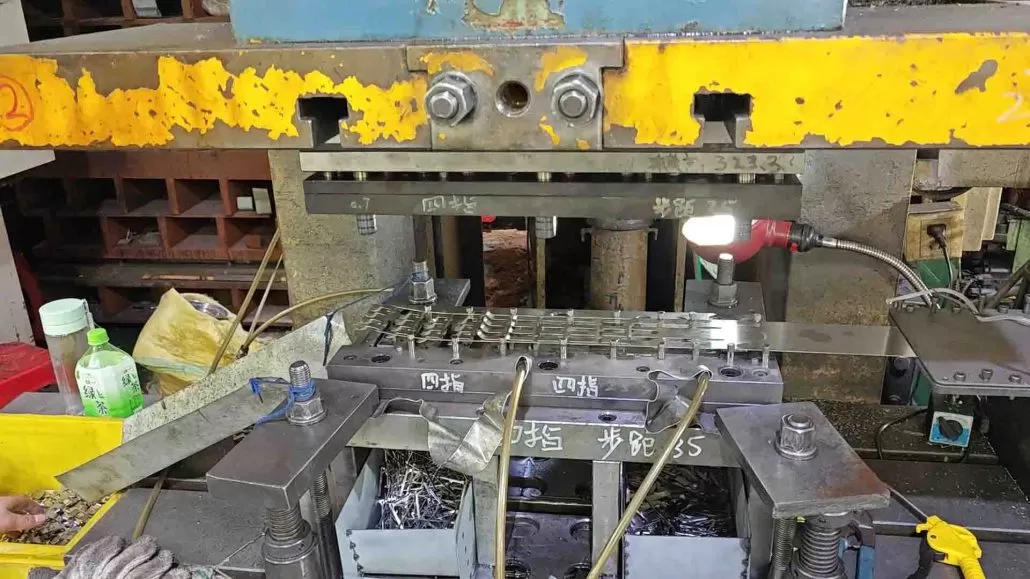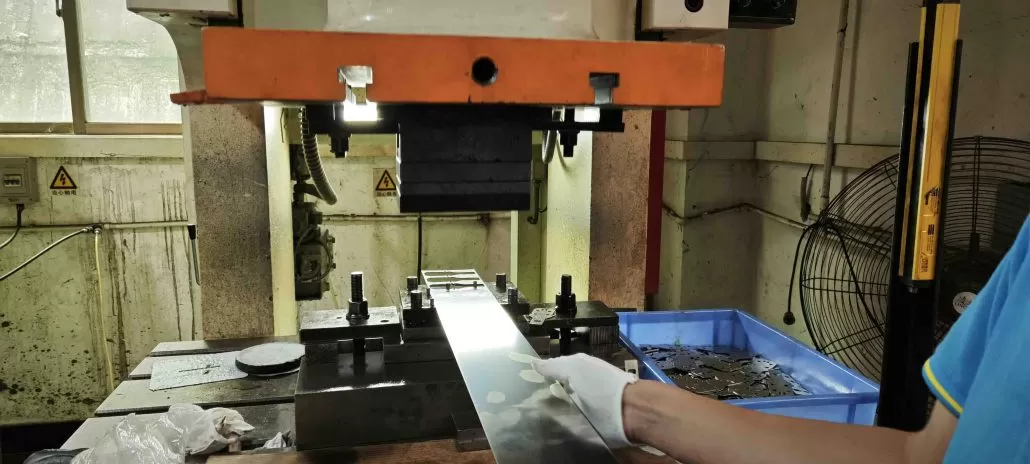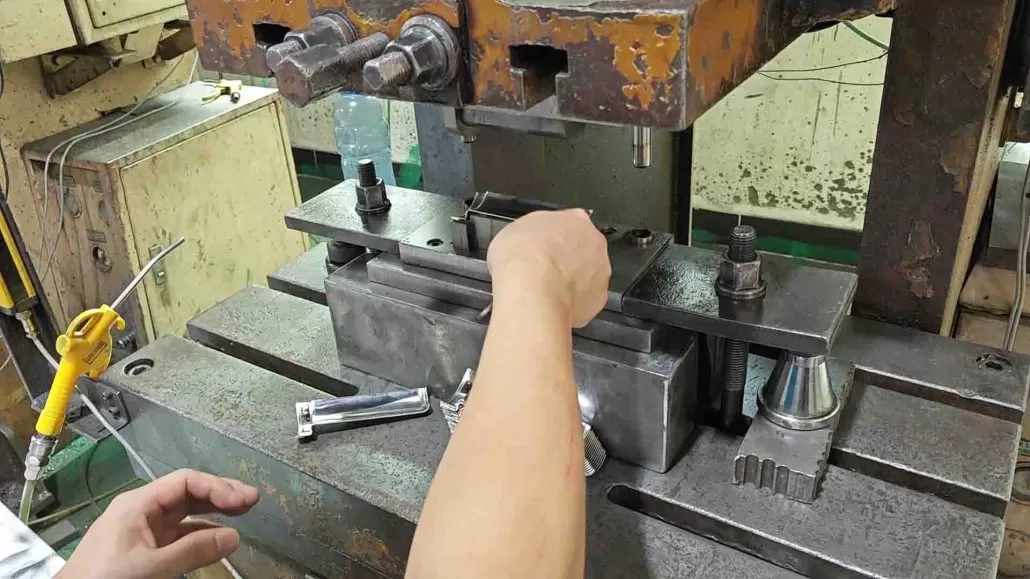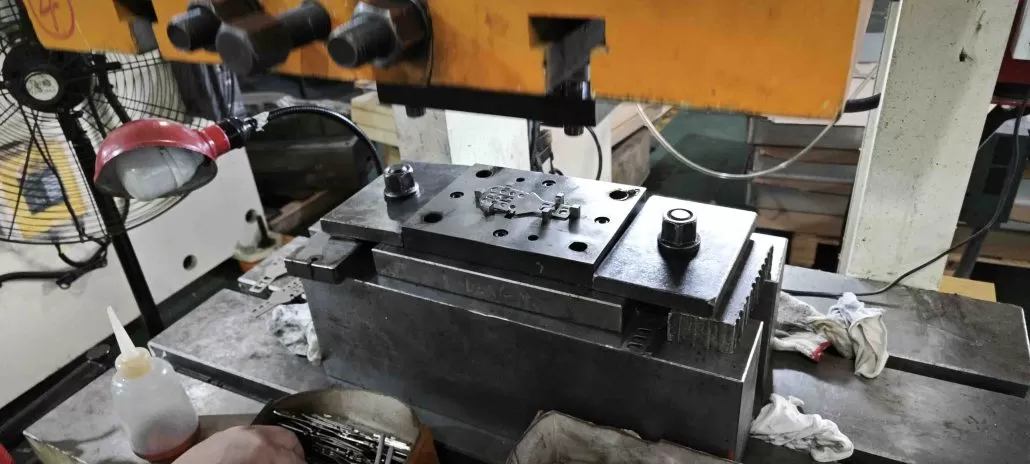What is Automotive Mmetal Stamping?
Automotive metal stamping is a manufacturing process used to create metal parts, components, and assemblies for the automotive industry. It involves the use of a stamping press, which applies high pressure to a metal sheet or strip to create the desired shape. The process is commonly used to create parts such as hoods, doors, fenders, and other body panel components. The stamping process can also be used to create parts for the engine and transmission, such as brackets, housings, and gears. Overall, automotive metal stamping is a critical process that enables the efficient production of high-quality metal components for the automotive industry.

Automotive Metal Stamping Concept
When it comes to the manufacturing of automotive parts, metal stamping is an essential process that involves the use of specialized machinery to cut, bend, and shape metal sheets into specific forms.
The automotive metal stamping process is used to produce a wide range of components, including body panels, frames, brackets, and other structural parts. It is a cost-effective, efficient, and reliable method that ensures consistency and accuracy in the production of automotive parts.
One of the key benefits of automotive metal stamping is that it allows manufacturers to produce high-quality components in large quantities. This is because the process can be automated, allowing for faster production times and higher output rates. Additionally, the use of computer-controlled machinery ensures that each part is identical, which is crucial for maintaining the safety and reliability of vehicles.
Another advantage of automotive metal stamping is its flexibility. It can be used to create components of various shapes and sizes, depending on the needs of the manufacturer. This means that it can be easily adapted to suit different automotive designs and specifications, making it a versatile technology that can be used across different vehicle models and brands.
However, automotive metal stamping also requires a high level of expertise and precision. The process involves several complex steps, including tooling design, material selection, and stamping parameters. Without careful attention to these factors, the quality of the components can be compromised, leading to safety issues and product recalls.
In conclusion, the automotive metal stamping concept is a critical part of the manufacturing process for automotive parts. It offers several benefits, including cost-effectiveness, efficiency, and flexibility, but requires a high level of expertise and precision to ensure quality and safety. As the demand for high-quality automotive components continues to grow, the importance of automotive metal stamping will only continue to increase.
Understanding the Automotive Metal Stamping Process
The automotive industry is constantly evolving, with new advancements in technology and processes making it possible for manufacturers to create more efficient and cost-effective vehicles. One such process that plays a crucial role in the manufacturing of automobiles is the automotive metal stamping process.
Metal stamping is a manufacturing process used to create metal parts for various industries, including automotive. In the automotive industry, metal stamping is a fundamental process used to manufacture car parts such as fenders, hoods, and doors. The process involves using a press machine to cut and shape metal into the desired car parts.

The Steps Involved in Automotive Metal Stamping
The automotive metal stamping process involves several steps, including blanking, piercing, bending, and forming.
Blankling
Blanking is the first step in the automotive metal stamping process. It involves cutting the metal into a specific shape and size. The metal is fed into the press machine, which uses a die to cut the metal into the desired shape.
Piercing
Piercing is the next step in automotive metal stamping. It involves creating holes or cutouts in the metal. The press machine uses a die to cut the metal into the desired shape.
Bending
Bending is the process of shaping the metal into a specific angle or shape. The press machine uses a die to bend the metal into the desired shape.
Forming
Forming is the final step in the automotive metal stamping process. It involves shaping the metal into its final form. The press machine uses a die to form the metal into the desired shape.
Benefits of Automotive Metal Stamping Process
The automotive metal stamping process has several advantages, making it an ideal choice for car manufacturing.
- Cost-effective production: The process is more cost-effective than other manufacturing processes, making it a popular choice for car manufacturers.
- High accuracy and precision: The process offers high accuracy and precision, ensuring that the metal parts produced meet the required specifications.
- Ability to work with a wide range of metals: The process can work with a wide range of metals, making it flexible and adaptable to different car manufacturing needs.
- High production rates: The process can produce metal parts at high rates, ensuring that the car manufacturing process is efficient and timely.
- Ability to create complex shapes: The process can create complex shapes, allowing car manufacturers to design and produce unique car parts.
The automotive metal stamping process is a crucial part of car manufacturing. It is a cost-effective and efficient way to produce metal parts for automobiles. With its high accuracy and precision, the process is capable of creating complex shapes and designs. Understanding the automotive metal stamping process is essential for anyone interested in the automotive industry. As technology advances, it is likely that the automotive metal stamping process will continue to evolve and become even more efficient and cost-effective, further improving the manufacturing of automobiles.

Automotive Metal Stamping Applications: How They Benefit Your Car
Automotive metal stamping is a manufacturing process that involves cutting and shaping metal sheets into various forms and sizes to create components used in cars. This process is critical in the production of automobiles, as it enables the creation of numerous components, ranging from exterior panels to interior parts.
Metal stamping is used to create various components, such as body panels, suspension components, and interior parts, which are essential in enhancing the functionality, performance, and aesthetics of a car. In this article, we will explore the applications of automotive metal stamping and how they benefit your car.
Benefits of Automotive Metal Stamping
- Durability: Components created through metal stamping are known for their strength and durability. They can withstand harsh weather conditions, high speed, and collisions, ensuring your car lasts longer.
- Precision: Metal stamping allows for the creation of complex shapes and designs with high accuracy. This precision is essential in producing high-quality components that fit together seamlessly.
- Cost-Effective: Metal stamping is a cost-effective way of producing components in large quantities. The process is efficient, and materials can be easily sourced, making it an affordable option for car manufacturers.
- Customization: Metal stamping allows for customization of components to meet specific needs. Car manufacturers can create unique designs and shapes for their cars, giving them a competitive edge in the market.
Applications of Automotive Metal Stamping
- Body Panels: Metal stamping is used to create body panels for cars, such as roofs, doors, hoods, and fenders. These panels provide protection, aerodynamics, and style to the car.
- Suspension Components: Metal stamping is used to create suspension components such as brackets, control arms, and steering knuckles. These components play a crucial role in providing stability, control, and comfort while driving.
- Interior Parts: Metal stamping is used to create interior parts such as seat frames, dashboard components, and door handles. These parts enhance the comfort, functionality, and aesthetics of the car’s interior.
- Exhaust Systems: Metal stamping is also used to create exhaust systems for cars. The exhaust system is responsible for carrying exhaust gases away from the engine and reducing noise. Metal stamping enables the creation of exhaust components that are durable and efficient in their function.
- Engine Components: Metal stamping is used to create various engine components, such as cylinder heads, valve covers, and timing covers. These components are vital in ensuring the engine’s performance, reliability, and longevity.
In conclusion, automotive metal stamping is an essential process in the production of cars. It offers numerous benefits such as durability, precision, cost-effectiveness, and customization. The applications of automotive metal stamping are vast, ranging from body panels to engine components, making it crucial in the automotive industry. If you’re a car enthusiast, you can appreciate the role of metal stamping in making cars more functional, efficient, and stylish.

What Does Stamping Mean in the Automotive Industry
Stamping is an essential process in the automotive industry that involves transforming metal sheets into auto parts. This process is accomplished using a stamping press, which applies high pressure to the sheets to form them into the desired shape.
Stamping is used to create various auto parts, including body panels, hoods, fenders, and doors. The process involves cutting, bending, and shaping metal sheets into the required dimensions and geometries.
The stamping process is crucial in the automotive industry because it enables manufacturers to produce high-quality parts with consistent accuracy at high volumes. The precision and speed of the stamping process also ensure that auto parts fit together perfectly, improving the overall performance and safety of the vehicle.
Stamping also offers other benefits to the automotive industry, including cost-effectiveness, durability, and versatility. Because stamping is a highly efficient and automated process, it is cost-effective and can produce high volumes of parts within a short time. Moreover, stamped parts are durable and can withstand harsh environments, making them ideal for automotive applications.
In conclusion, stamping is a critical process in the automotive industry that enables manufacturers to produce high-quality parts efficiently and cost-effectively. The precision and speed of the process ensure that parts fit together perfectly, improving the overall performance and safety of the vehicle. Moreover, stamped parts are durable and versatile, making them ideal for automotive applications.
If you are looking for high-quality stamped parts for your automotive needs, be sure to work with a reputable and experienced stamping company to ensure that you get the best products at a reasonable price.
FAQ
Automotive metal stamping is a manufacturing process used to create metal parts, components, and assemblies for the automotive industry. It involves the use of a stamping press, which applies high pressure to a metal sheet or strip to create the desired shape.
Some common parts created through automotive metal stamping include hoods, doors, fenders, and other body panel components, as well as parts for the engine and transmission, such as brackets, housings, and gears.
Automotive metal stamping is a critical process that enables the efficient production of high-quality metal components for the automotive industry. This process allows for the creation of complex parts with great precision and accuracy, which helps to ensure the safety and reliability of vehicles.

